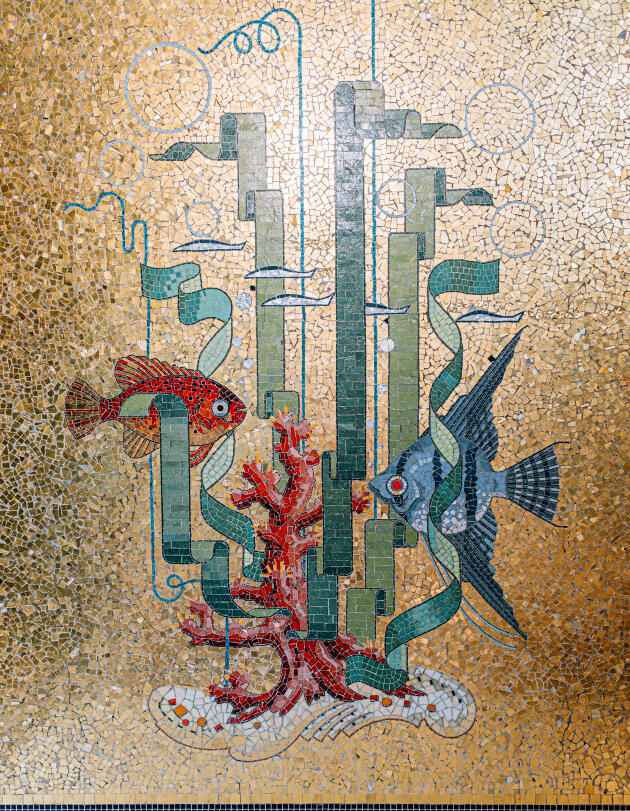“Is it for the ground that you come? » In Rennes, rue Dupont-des-Loges, the owners of the Alaska flea market question the art historian Capucine Lemaître. Indeed, it is not the vintage nuggets of the boutique that interest the specialist, but rather the majestic mosaic floor. A terrazzo in gray and ocher tones, surrounded by subtle black and gold friezes. A surprise discovered at the opening in 2017 by the owners of Alaska, this magnificent original floor having until then been hidden under old white tiles.
Long before becoming a trendy flea market, the place housed at the beginning of the 20th centurye century a Peugeot garage. California, small island bordered by the arms of the Vilaine to the east of the city center, a few steps from the station, is then an industrial and artisan district. This is where the Odorico family, mosaicists of Italian origin, established their workshops in 1882. This is evidenced by this homage footbridge at the foot of the Grands Moulins de Rennes, on which a frieze of multicolored tiles from the remaining funds of the original Odorico workshops was been carried out.
Odorico, a name which smells much more of the Mediterranean than of the Breton coasts. However, it was in the towns of north-west France that this family, coming from the province of Frioul, near Venice, left its decorative mark. The Odoricos arrived in France to work on the mosaics for the Opéra Garnier construction site, which lasted from 1862 to 1875, under the direction of their compatriot Gian Domenico Facchina (1826-1903).
Fleeing economic difficulties in Italy, Isidore Odorico senior (1845-1912) and his brother Vincent (1848-1909) understood that a market was emerging in France for mosaic, a technique which was almost no longer in use at the time. At the beginning of the Art Nouveau and Art Deco artistic movements, it was in Rennes that the second generation was born, including Isidore Odorico fils (1893-1945), who gave this art local influence. A student at the Beaux-Arts in Rennes, he developed a more refined artistic vision of mosaic than his ancestors. Through the choice of bold colors and compositions with unique patterns, this designer with a strong personality coupled with business acumen becomes very popular in the Breton capital.
A stone’s throw from Alaska, you have to open the door of the Bretone creperie, opened in 2021. This building with surprising architecture was the personal home of Isidore Odorico. The exterior walls are covered with trencadis yellow, shards of ceramic that the Catalan architect Gaudi also used. At the heart of the restaurant sits a small museum room, the old bathroom of the house which looks like a work of art. The blue broken tile floor is decorated with gold and black rectangles, as well as green waves. The bathtub, the centerpiece, is decorated with a black surround surmounted by a wall covered in gold, in the middle of which two large fish – one blue and one red – undulate between red coral and green algae.
You have 65% of this article left to read. The rest is reserved for subscribers.
